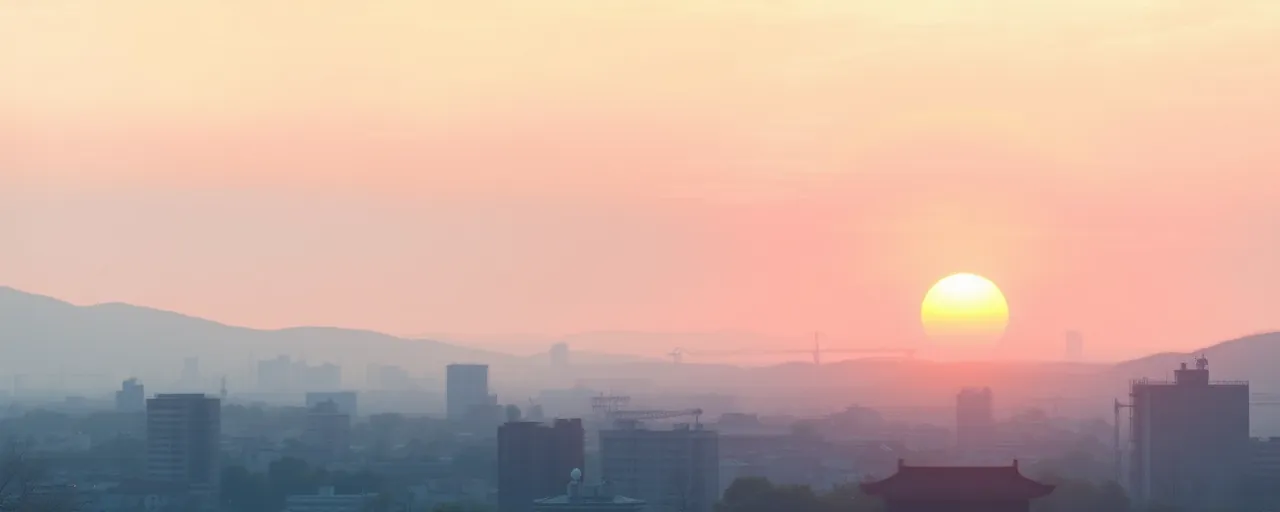A Call Amid Crisis
Deputy Secretary of State Christopher Landau picked up the phone on April 1, 2025, to connect with South Korea’s First Vice Foreign Minister Kim Hong-kyun. The conversation came at a pivotal moment, with wildfires ravaging South Korea’s southeastern region, leaving 30 dead and thousands displaced. Landau offered condolences for the devastation, a gesture that underscored the human stakes of their dialogue. Beyond the immediate tragedy, the two officials tackled pressing security concerns and economic opportunities, reflecting a partnership tested by both nature and geopolitics.
The U.S.-South Korea alliance, forged in the aftermath of World War II, has long been a cornerstone of stability in East Asia. Today, it faces fresh challenges, from North Korea’s nuclear ambitions to trade tensions sparked by recent U.S. tariffs. Landau reaffirmed America’s commitment to the complete denuclearization of North Korea, a goal that has eluded negotiators for decades. Meanwhile, economic ties are deepening, with South Korean firms pouring billions into U.S. industries. This call was more than a routine check-in; it was a snapshot of a relationship at a crossroads.
Security Strains in the Spotlight
North Korea’s refusal to abandon its nuclear arsenal remains the thorniest issue on the table. Kim Jong Un’s regime has ramped up missile tests and threats, especially after joint U.S.-South Korean military drills featuring the USS Carl Vinson. Pyongyang demands recognition as a nuclear state, alongside sanctions relief and a scaled-back U.S. military presence in the region. Landau’s emphasis on denuclearization echoes a long-standing U.S. position, but experts question its feasibility. Talks between President Donald Trump and Kim Jong Un have flickered with promise before fading into stalemate, leaving the peninsula’s future uncertain.
Historical efforts offer little comfort. The 1994 Agreed Framework collapsed over compliance disputes, and the Six-Party Talks of the 2000s dissolved amid mistrust. Today, South Korea hosts 28,500 U.S. troops under the 1953 Mutual Defense Treaty, a presence that bolsters deterrence but also fuels North Korean grievances. Voices in Seoul argue for more diplomatic flexibility, while U.S. policymakers insist on a hard line. Caught between these pressures, the alliance must balance military readiness with the faint hope of a breakthrough.
Economic Bonds Amid Trade Winds
On the economic front, the U.S. and South Korea are weaving tighter connections despite choppy waters. Landau and Kim highlighted South Korean investments in American industry, like Hyundai’s $21 billion pledge to build steel and electric vehicle plants in states like Louisiana and Georgia. These moves aim to sidestep U.S. tariffs that have dented South Korea’s exports, projected to shrink its GDP by 0.16%. The 2012 U.S.-Korea Free Trade Agreement laid the groundwork, but recent trade policies have sparked friction. Both sides see value in cooperation, yet the terms of that partnership are under scrutiny.
Energy collaboration offers another bright spot. A January 2025 memorandum of understanding between the two nations targets advanced nuclear reactors and LNG exports, building on decades of nuclear ties that began with U.S. technology in the 1970s. South Korea’s APR-1400 reactor, now a global export, traces its roots to that era. With the Asia-Pacific Economic Cooperation summit looming, Seoul aims to showcase its role in regional energy solutions. Still, analysts note that economic gains hinge on navigating political turbulence, including unresolved debates over U.S. military cost-sharing.
Climate’s Cost Hits Home
The wildfires searing South Korea’s southeast cast a stark light on climate change’s toll. Over 48,000 hectares burned, 6,000 structures vanished, and 10,000 personnel battled the flames with 420 helicopters in tow. Scientists tie the disaster to rising temperatures and drought, patterns worsened by human activity. The government faced heat for its response, with some residents pointing to gaps in preparedness. Landau’s condolences nodded to this shared challenge, one that transcends borders and demands joint action.
South Korea’s not alone in grappling with nature’s fury, but its vulnerability stands out. Researchers warn that fire risks will climb as global warming accelerates, testing infrastructure and resilience. The U.S. and South Korea have pledged climate cooperation, yet tangible steps lag behind the rhetoric. For everyday people, from farmers to city dwellers, the wildfires are a wake-up call, a reminder that economic and security talks carry weight only if the land beneath them endures.
Looking Back, Stepping Forward
This latest exchange between Landau and Kim fits into a 76-year tapestry of U.S.-South Korean ties. From the Korean War’s chaos to today’s high-stakes diplomacy, the alliance has evolved, blending military might with economic muscle. North Korea’s shadow looms large, as it has since 1950, while trade and energy ventures signal a broader vision. The wildfires add urgency, exposing how environmental threats can scramble even the best-laid plans. What holds this partnership together is its ability to adapt, though cracks in trust and strategy persist.
For those watching from afar, the stakes feel real yet distant. A stalled denuclearization push means lingering tension; a thriving economic link means jobs and innovation. Climate disasters mean lives upended, a cost no tariff or treaty can offset. The U.S. and South Korea stand at a juncture, weighing old commitments against new realities. Their next moves, whether in boardrooms or on battlegrounds, will ripple far beyond the peninsula, shaping a region on edge.
